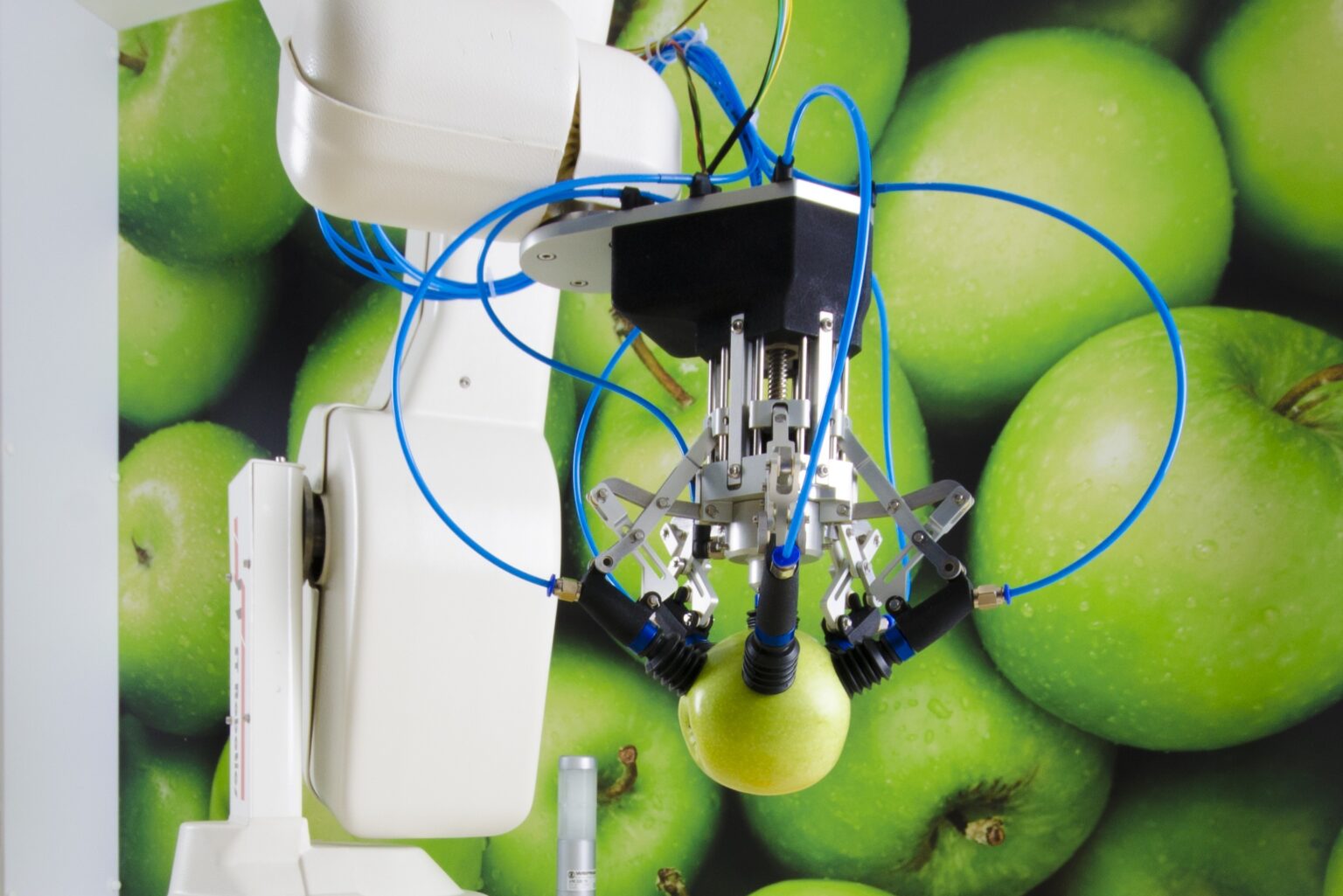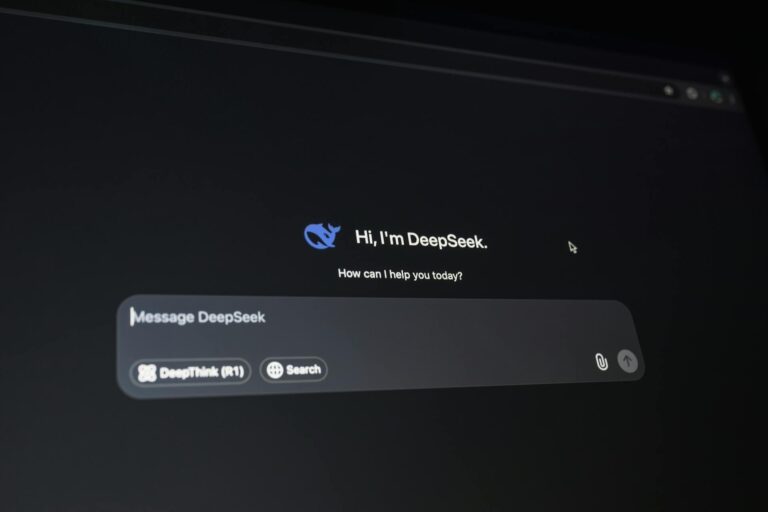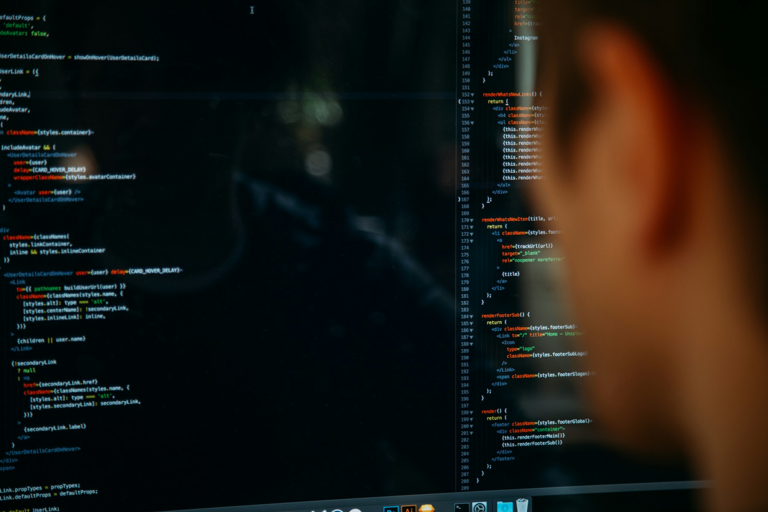
Think industrial robotics and the mind turns to bulky, limbed machines speeding up production lines in soulless manufacturing plants.
You probably wouldn’t think of apples, or more precisely apple picking. Up to now, fruit picking has been a human-led enterprise, a task too delicate and unpredictable for heavy-handed automatons.
But this is the era of smart robotics. And as a product development firm with a thirst for technology innovation, Cambridge Consultants includes an apple-picking robot in its portfolio of solutions that have repeatedly disrupted their clients’ markets.
Chris Roberts, Head of Industrial Robotics, leads such projects and is predicting further advancements in the robotics space.
“Surprisingly, these days, most robotics in the real world are pretty dull,” he tells Digital Bulletin. “Robots move objects really quickly from one place to another but there’s very little intelligence in a lot of robotics. In the last five to 10 years though, it has got interesting again. People are doing more and more around smart robotics, and that’s the thing we’re interested in.
“Picking apples is the sort of task that couldn’t be automated five or 10 years ago, because you couldn’t come up with a product that was capable of sensing where the apples were on the tree and then handling them softly enough not to bruise them. But we’ve worked on projects that involve fruit picking now, and robotics that can meet those requirements.”
Roberts’ division of Cambridge Consultants is particularly invested in this strand. As a high-end consultancy, part of its remit is to take robotics to industries where automation hadn’t been previously considered an option. In order to meet this objective, it has explored some compelling use cases.
“We’ve had examples recently where we’re looking into how to do VSLAM (visual, simultaneous localisation and mapping), for example, which is a product that can be dropped into an unknown area to map that area and navigate its way around without colliding with things,” says Roberts. “Another one is integrating neural network-type approaches with physical objects. You often see neural networks detecting objects in a scene and drawing boxes around them. We had a project recently where we had to not only do that, but then manipulate those objects.
“You need to know when to go for a classical approach or when to go for an artificial intelligence approach. AI is very good at solving one class of problems, another class of problems is best solved with a more typical designed algorithm approach.”
These technologies have the potential to create real-world change in sectors like agriculture, healthcare and industrial manufacturing, where robots will work alongside humans to complete tasks in better, faster and more efficient ways. But most organisations don’t have the knowledge-base to successfully integrate robotics on their own.
This is the gap that companies like Cambridge Consultants fill. As both a product development business and a consultancy, Roberts emphasises the dual-focus it has on its teams of engineers delivering cutting-edge technology solutions which are also commercially viable.
People are doing more and more around smart robotics, and that’s the thing we’re interested in
“The types of engagements we get with our clients really span pretty much the whole range of development and delivery,” he explains. “Generally, people are trying to push the boundaries of what can and can’t be done but we’re very good at quickly working out whether an idea has got legs or not.
“There’s no point looking at an exciting aspect in robotics if it’s not commercially relevant. We need to make sure that with the people who are making these big decisions, we’re not just throwing technology at them but saying that if they choose to go with this technology, then this is the return on investment that you get.
“If our clients make something that is successful, then they get to gain all of the profits from that. We get paid for our time, whatever we do. That’s how the business case works.”
Robotics investments aren’t decisions to be taken lightly though, according to Roberts. Implementation can be lengthy and expensive, with time and money savings reaped further down the line. “The best robotics projects are ones where a company decides to transform its business, and that doesn’t happen very often. It can be a once-in-a-lifetime decision,” he adds.
In spite of the challenge, industrial robotics integration is very much on the rise. The most recent World Robotics Report, published by the International Federation of Robotics (IFR) in October last year, showed that a record 381,000 units were shipped globally in 2017. This figure was a notable 30% increase on the previous year’s number, with current projections forecasting 630,000 units for roll-out in 2021.
A wider look at the data also shows a 114% increase in volume over the five years between 2013 and 2017 – but Roberts takes a dim view of headline-grabbing predictions that robots will usurp humans in the workplace. From his own experience, clients have turned to automation when they’re struggling to find employees that fit the bill.
“You hear a lot in the press about robots and automation stealing people’s jobs,” he says. “That’s not actually what we’re seeing when clients come to us. It’s a slightly different driver; it’s more often ‘I want people to do this job, but I can’t get them’. People either aren’t interested or for whatever reason, the workforce is not available.
“For robotics to be commercially viable, generally they don’t replace anyone. There’s an 80/20 rule that applies. Maybe there’s an area that you can automate that you couldn’t before, but you can only automate 80 or 90% of the task. If you wanted to automate the next 10%, you have to spend exponentially more money. You end up with the same number of people but they’re more productive because the machines are doing the repetitive part of the task.
“While I can certainly see some disruption, I can’t see a life of leisure for humans where all the jobs will be done by robots. It will change and evolve, but there won’t be a massive revolution where there’s mass unemployment or where people suddenly don’t have to work.”
The IFR’s report showed that industrial robots are still most widely deployed in the sectors you would expect: the automotive industry accounted for 33% of all units shipped in 2017, with the electrical/electronics and metal sectors making up the top three.
Agriculture is the industry where robotics is most likely to have its biggest impact over the next decade, according to Roberts – and the figures support this view. The market for ‘agribots’ is set to be worth $12.8 billion by 2022 as farmers introduce technology as a harvesting aid.
“It’s already quite mechanised; combine harvesters replaced scythes a very long time ago! But it’s one of those industries where there’s a real benefit to being able to deal with things in a more adaptive way,” offers Roberts.
“It’s also an industry where there’s an economy of scale; farms are getting bigger and bigger and it’s an industry where there are labour shortages worldwide. It’s harder for farmers to get the workers to do the manual tasks. More broadly than that, any industry where the work is boring or dangerous or it’s hard to find staff, I can see automation coming.”
For Cambridge Consultants, the future will be defined by how successful it is in building innovative products that make a real difference to its customers, not just in robotics but across its other verticals including telecoms, semiconductor and defence & security.
It’s operations don’t just stretch across sectors but around the world. At the end of January, it inaugurated an engineering hub in Singapore which will become its headquarters in Asia. This is a vital market for Cambridge Consultants, where it serves high-profile clients like Hitachi and Asahi in China, Japan, South Korea and Taiwan as well as Singapore.
“We have to make sure we retain our world-class reputation and ability to implement cutting-edge technology,” concludes Roberts. “We’ll only get there if we continue to invest, continue to do interesting projects, but also if we continue to look at new technologies as they come along.
“In robotics, it’s things like artificial intelligence, and how that interacts with the real world. How can we get neural networks running on low-cost platforms? We need to think about machine learning and machine vision techniques that are available, making sure we’re on top of those and remain on top of those.
“The other strand is about the business focus. We need to speak the language of the C-suite; it’s not just about a technology push but we must also understand the pressures businesses are facing.”


